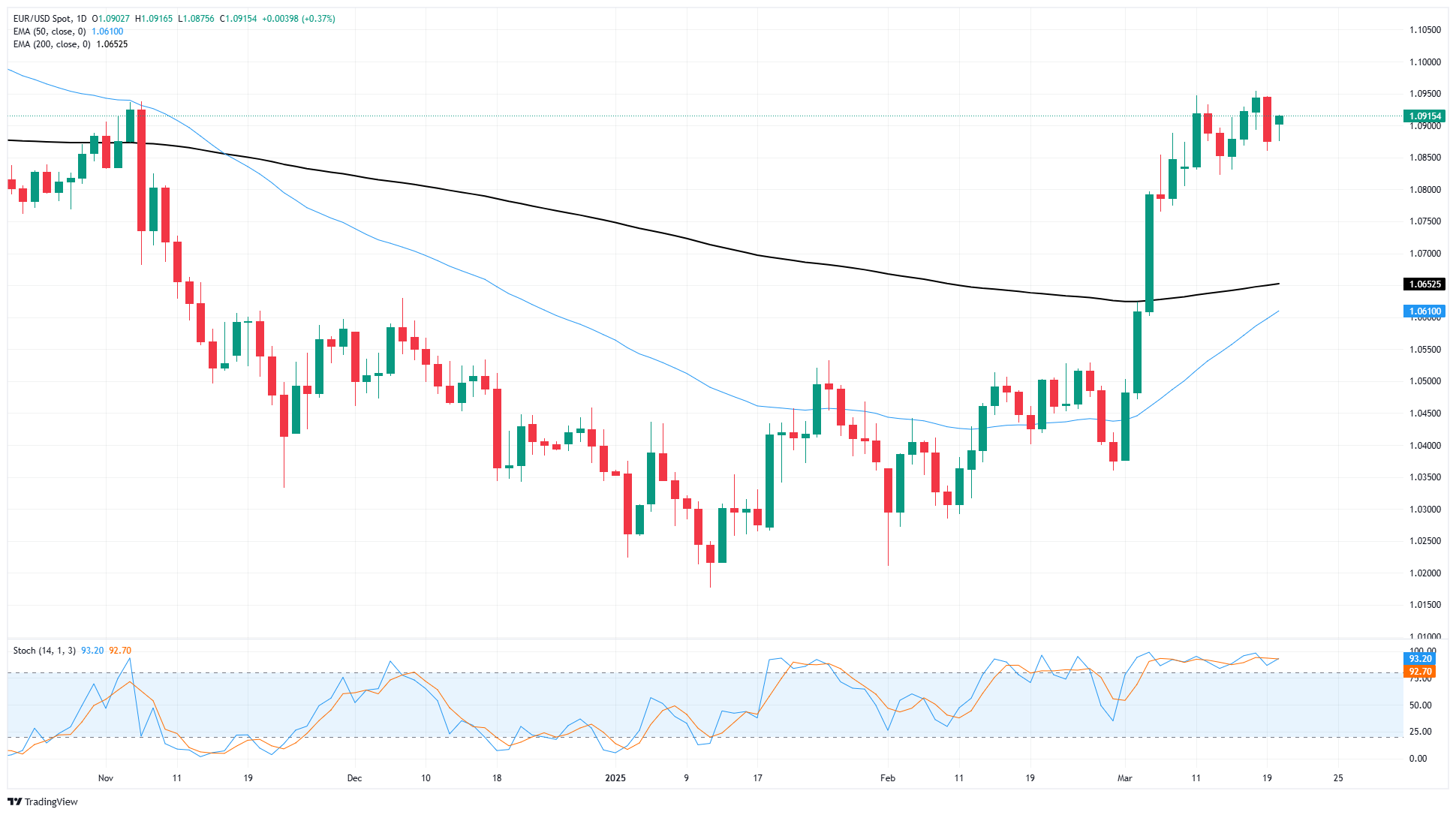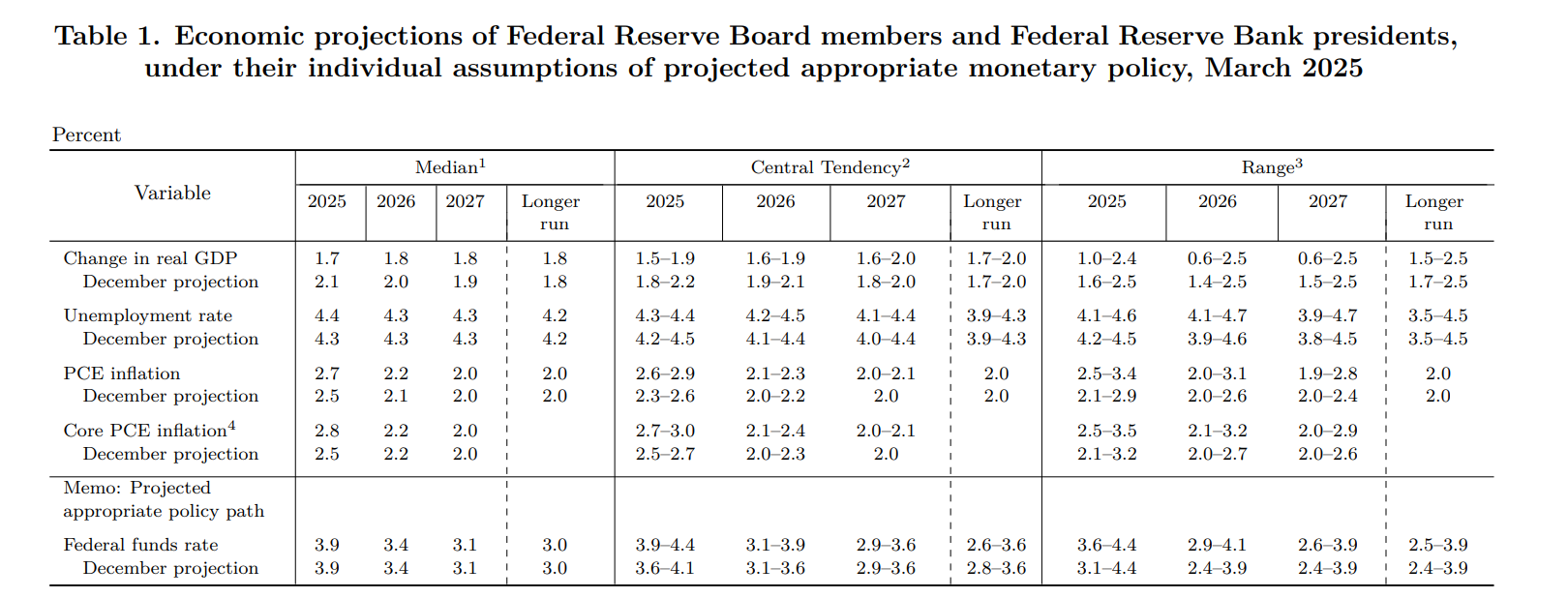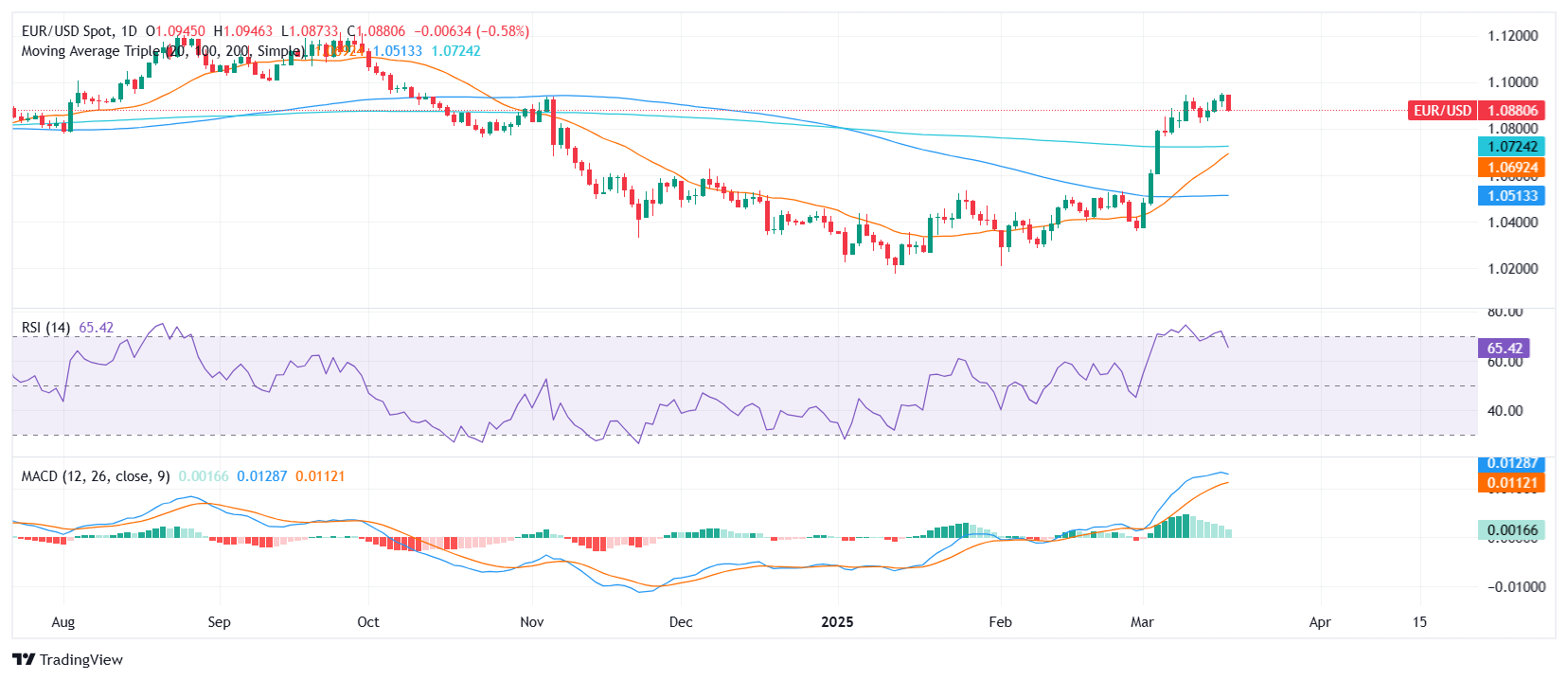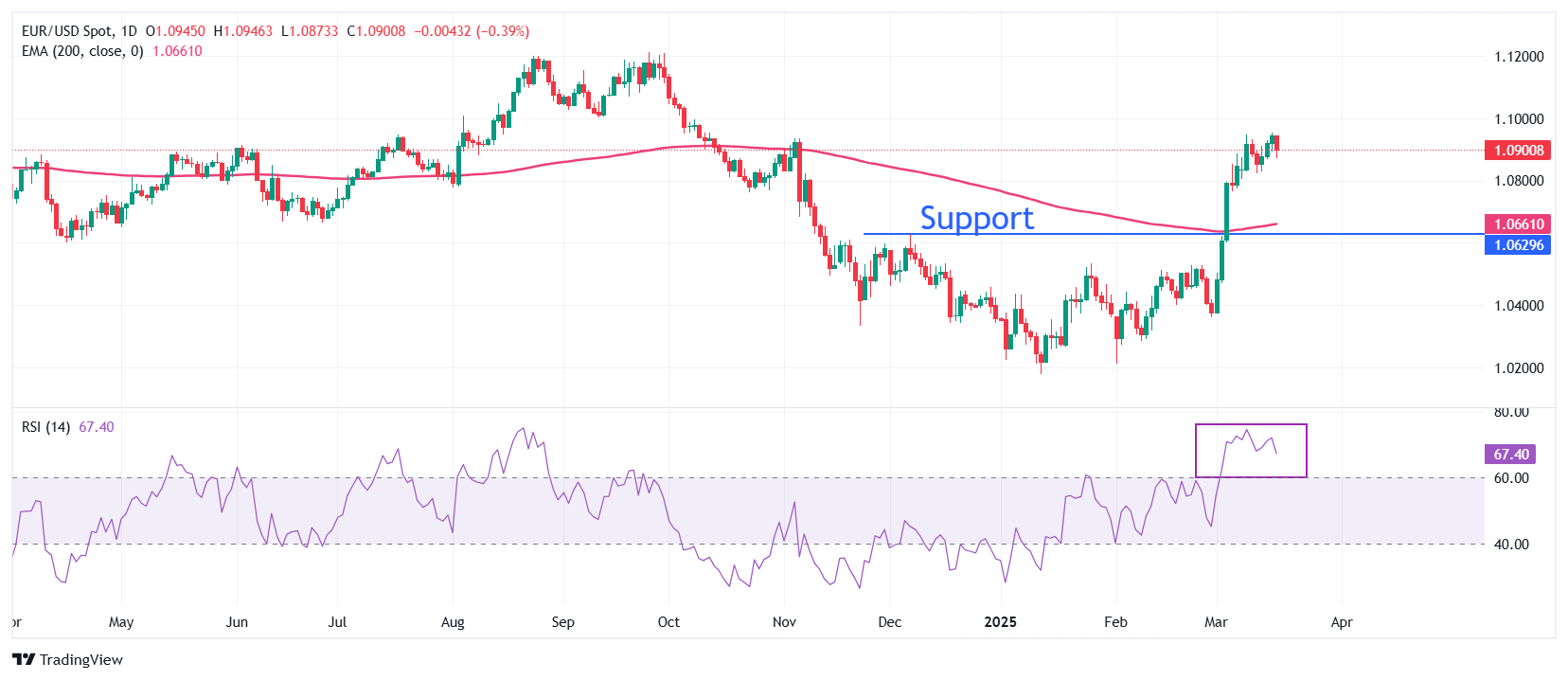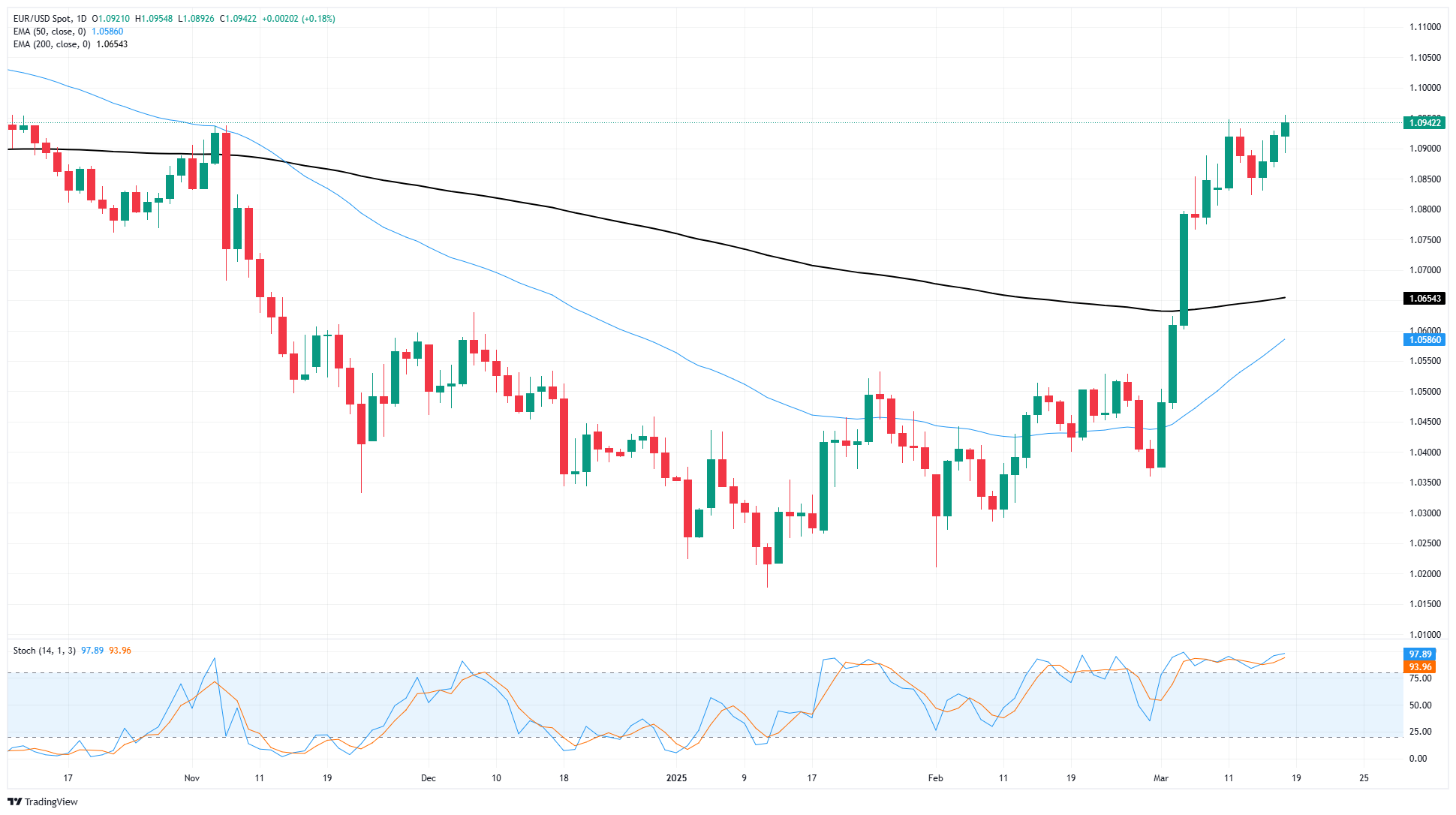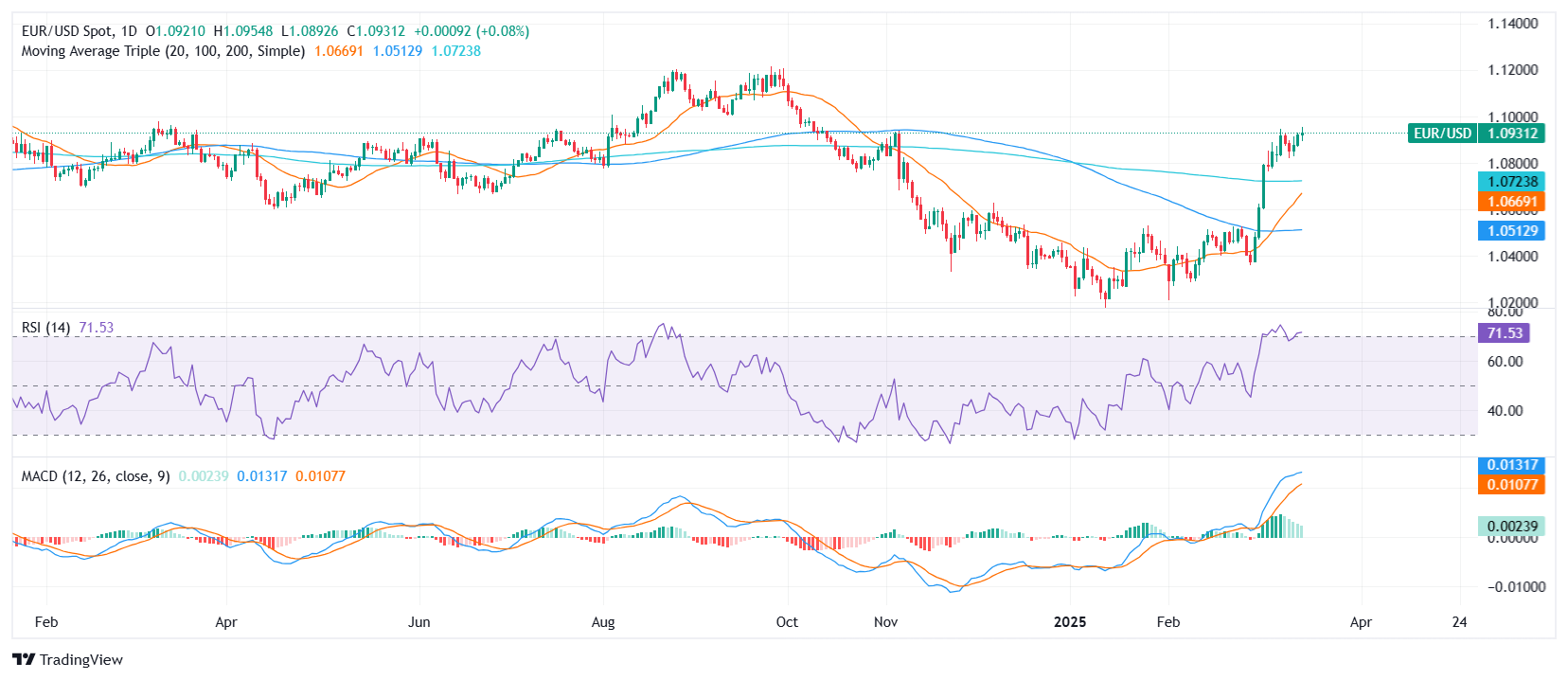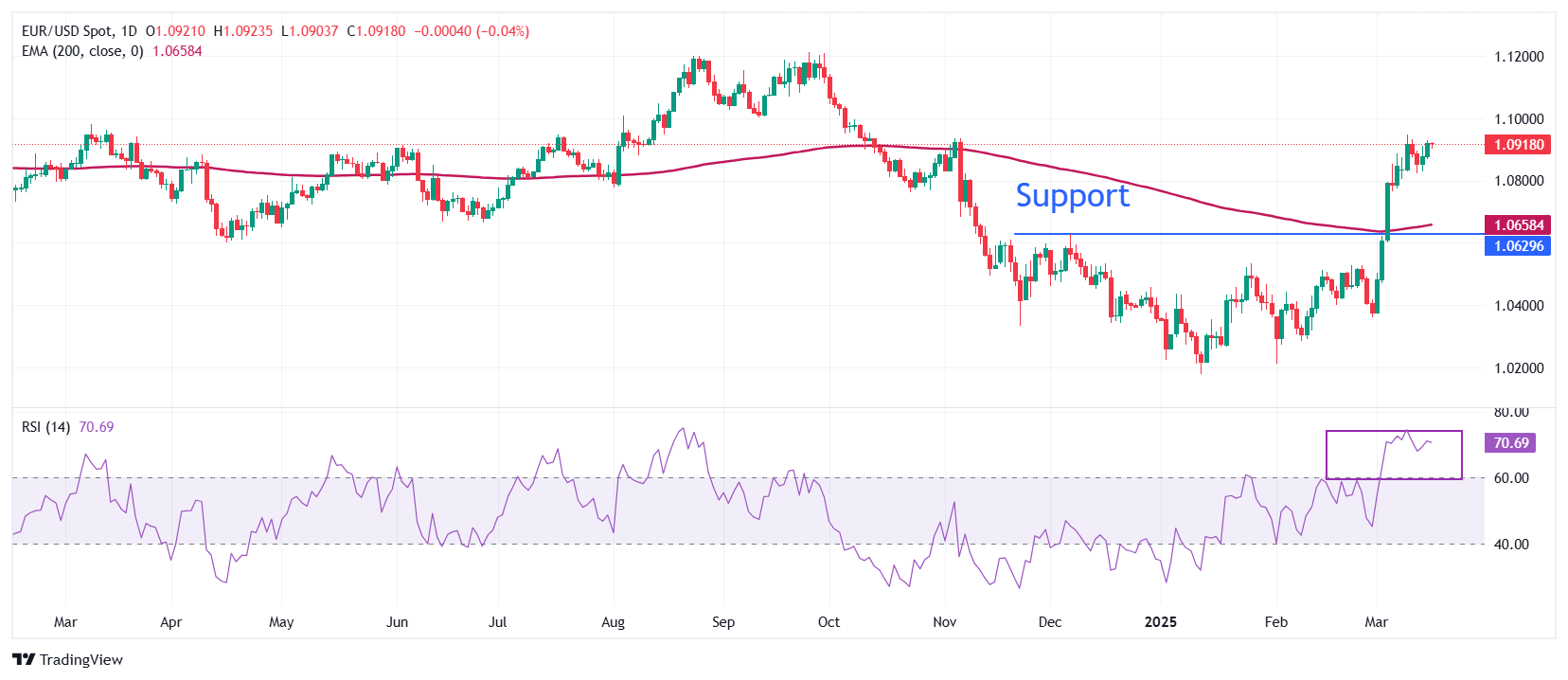- Analytics
- News and Tools
- Quotes
- Chart and quotes for EURUSD
CFD Trading Rate Euro vs US Dollar (EURUSD)
| Date | Rate | Change | |
|---|---|---|---|
| 20.04.2025 | 1.14763 | 0.74% | |
| 17.04.2025 | 1.13924 | 0.23% | |
| 16.04.2025 | 1.13666 | -0.27% | |
| 15.04.2025 | 1.1397 | 1.02% | |
| 14.04.2025 | 1.12816 | -0.62% | |
| 13.04.2025 | 1.1352 | 0.01% | |
| 10.04.2025 | 1.13505 | 1.40% | |
| 09.04.2025 | 1.11943 | 2.24% | |
| 08.04.2025 | 1.09489 | -0.07% | |
| 07.04.2025 | 1.0957 | 0.42% |
Related news
-
20.03.2025 05:12EUR/USD remains subdued around 1.0900 ahead of ECB’s Lagarde speech
- EUR/USD continues to decline ahead of ECB President Christine Lagarde’s speech at the European Parliament in Brussels.
- The US Dollar struggled as US yields weakened, following Fed’s reaffirmation of its outlook for two rate cuts in 2025.
- Germany’s proposed economic plan, aimed at stimulating growth and boosting defense spending, could contribute to rising inflation and broader economic expansion.
EUR/USD loses ground for the second successive day, trading around 1.0900 during Asian hours on Thursday. However, the pair strengthened as the US Dollar (USD) remained under pressure, weighed down by declining yields after the Federal Reserve (Fed) reaffirmed its outlook for two rate cuts later this year. However, uncertainty surrounding US President Donald Trump’s tariff policies adds a layer of caution.
Meanwhile, US Treasury bonds gained traction following the Fed’s decision to slow the pace of quantitative tightening, citing concerns over reduced liquidity and potential risks tied to government debt limits.
The US Dollar Index (DXY), which tracks the USD against six major currencies, is hovering near 103.40, while US Treasury yields continue to decline. The 2-year yield stands at 3.97%, and the 10-year yield at 4.24%.
On Wednesday, as expected, the Federal Reserve held the federal funds rate steady at 4.25%–4.5% during its March meeting. Fed Chair Jerome Powell noted, “Labor market conditions are solid, and inflation has moved closer to our 2% longer-run goal, though it remains somewhat elevated.”
In Europe, German leaders approved a debt restructuring plan proposed by likely Chancellor Friedrich Merz on Tuesday. The plan aims to stimulate economic growth and increase defense spending. Market participants anticipate that a shift away from Germany’s long-standing fiscal conservatism could drive inflation and economic expansion, prompting the European Central Bank (ECB) to reassess its current monetary policy.
Traders will likely observe ECB President Christine Lagarde on Thursday, who is scheduled to deliver an introductory statement on Economic and Monetary Affairs (ECON) at the European Parliament in Brussels, Belgium.
Euro PRICE Today
The table below shows the percentage change of Euro (EUR) against listed major currencies today. Euro was the weakest against the Japanese Yen.
USD EUR GBP JPY CAD AUD NZD CHF USD 0.07% 0.08% -0.19% 0.06% 0.28% 0.47% -0.05% EUR -0.07% 0.00% -0.24% -0.01% 0.20% 0.40% -0.12% GBP -0.08% -0.00% -0.25% -0.06% 0.20% 0.39% -0.14% JPY 0.19% 0.24% 0.25% 0.24% 0.46% 0.63% 0.18% CAD -0.06% 0.01% 0.06% -0.24% 0.23% 0.41% -0.15% AUD -0.28% -0.20% -0.20% -0.46% -0.23% 0.20% -0.35% NZD -0.47% -0.40% -0.39% -0.63% -0.41% -0.20% -0.56% CHF 0.05% 0.12% 0.14% -0.18% 0.15% 0.35% 0.56% The heat map shows percentage changes of major currencies against each other. The base currency is picked from the left column, while the quote currency is picked from the top row. For example, if you pick the Euro from the left column and move along the horizontal line to the US Dollar, the percentage change displayed in the box will represent EUR (base)/USD (quote).
-
20.03.2025 00:10EUR/USD holds steady after Fed treads water on rates
-
19.03.2025 18:11EUR/USD trims losses as Fed holds rates, signals cautious stance
-
19.03.2025 16:13EUR/USD Price Analysis: Bulls lose steam as correction unfolds
-
19.03.2025 10:08EUR/USD declines as US Dollar strengthens ahead of Fed decision
-
19.03.2025 09:22EUR/USD is trading right below 1.0900 – BBH
-
19.03.2025 09:01EUR/USD to consolidate around current levels in the near term – Danske Bank
-
19.03.2025 08:27EUR/USD: To trade in a choppy manner between 1.0905 and 1.0970 – UOB Group
-
19.03.2025 03:59EUR/USD softens below 1.0950 as Fed rate decision looms
-
18.03.2025 23:19EUR/USD ticks into new multi-year high as Fed rate calls looms large
-
18.03.2025 16:16EUR/USD Price Analysis: Neutral stance around 1.0930 as momentum stalls
-
18.03.2025 09:48EUR/USD to consolidate around current levels in the near term – Danske Bank
-
18.03.2025 08:27EUR/USD: Above 1.0855, the pair can test 1.0950 – UOB Group
-
18.03.2025 08:17EUR/USD: May correct lower on the day – OCBC
-
18.03.2025 07:56EUR/USD shows resilience ahead of German debt vote, US-Russia peace talks
-
18.03.2025 00:40EUR/USD holds below 1.0950, hopes of German fiscal deal might help limit its losses
-
18.03.2025 00:40EUR/USD holds below 1.0950, hopes of German fiscal deal might help limit its losses
-
17.03.2025 16:29EUR/USD Price Analysis: Bulls regain ground but momentum shows signs of exhaustion
-
17.03.2025 12:53EUR/USD: Above 1.0900/10, EUR to retest 1.0950/60 – Scotiabank
-
17.03.2025 09:33EUR/USD: Likely to trade between 1.0845 and 1.0910 – UOB Group
© 2000-2025. All rights reserved.
This site is managed by Teletrade D.J. LLC 2351 LLC 2022 (Euro House, Richmond Hill Road, Kingstown, VC0100, St. Vincent and the Grenadines).
The information on this website is for informational purposes only and does not constitute any investment advice.
The company does not serve or provide services to customers who are residents of the US, Canada, Iran, The Democratic People's Republic of Korea, Yemen and FATF blacklisted countries.
Making transactions on financial markets with marginal financial instruments opens up wide possibilities and allows investors who are willing to take risks to earn high profits, carrying a potentially high risk of losses at the same time. Therefore you should responsibly approach the issue of choosing the appropriate investment strategy, taking the available resources into account, before starting trading.
Use of the information: full or partial use of materials from this website must always be referenced to TeleTrade as the source of information. Use of the materials on the Internet must be accompanied by a hyperlink to teletrade.org. Automatic import of materials and information from this website is prohibited.
Please contact our PR department if you have any questions or need assistance at pr@teletrade.global.
